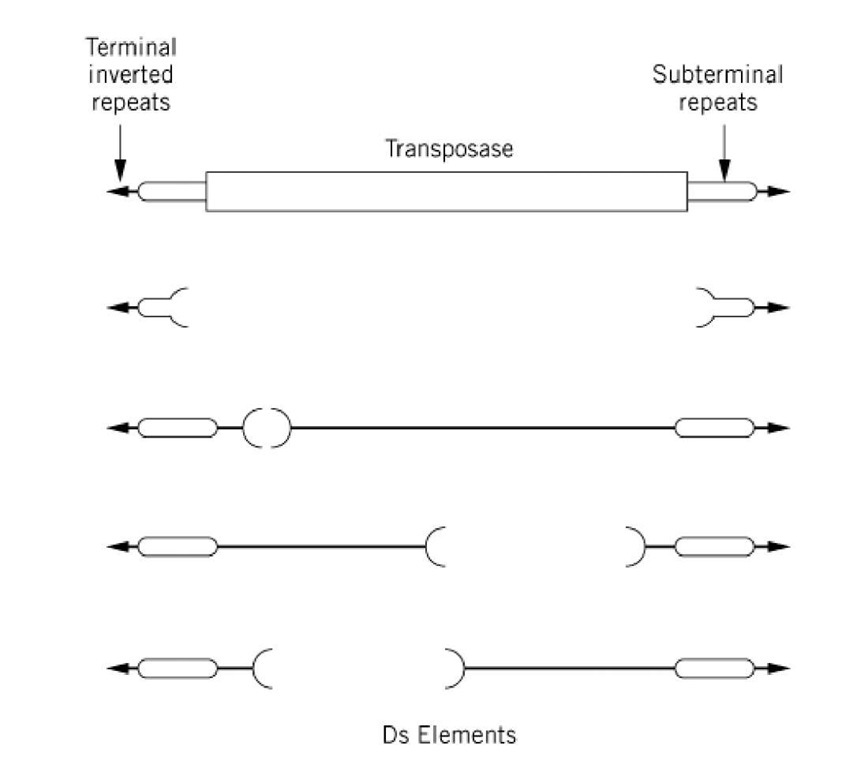Transposable elements are discrete pieces of DNA that can move between nonhomologous positions in the genome. When Barbara McClintock discovered transposable elements in maize, she called them controlling elements, emphasizing that they could affect gene expression, in addition to being able to move from place to place within the genome (1). She discovered two classes of elements; one she termed activator (Ac), which could itself translocate within the genome. She also determined that Ac encoded a product that could promote the movement of a second class of elements called dissociation (Ds). In the presence of Ac, Ds could move and cause chromosome breaks that altered the expression of nearby genes, but was unable to move in the absence of Ac. Ds elements are so-named because their translocation could be associated with chromosome breakage.
We now know that Ac is an intact transposable element encoding a recombinase, a transposase, that promotes element translocation and has special sequences at the termini of the element upon which the transposase acts to promote translocation. Such intact elements are said to be "autonomous" because they can translocate without the assistance of another element. Ds, by contrast, is a nonautonomous element. It doesn’t encode a transposase itself and is thus dependent on the presence of other Ac elements to supply a transposase to promote its transposition. Ds is actually an Ac element that has undergone internal deletions that have removed the transposase gene but have left intact the special terminal sequences on which transposase acts intact (Fig. 1). Thus the terminal sequences of Ds are the same as the terminal sequences of Ac, so that the Ac transposase can promote the translocation of Ds (2); there are several different Ds elements that contain different extents of the internal, nonterminal sequences. The deletions are thought to result from abortive repair of the gapped donor site after element excision (2-4).
Figure 1. Autonomous and nonautonomous elements. A schematic representation on an intact (autonomous) Ac element is shown (top line). It encodes a transposase formed from several exons (not shown) and special recombination sequences at the ends of the element. The arrows represent short perfect inverted repeats and the oval other repeated sequences; these are not shown to scale. Only some of the subterminal repeats are necessary for transposition. Various deletion derivatives of Ac are shown (lines 2-5); these internal deletions make the element dependent on an intact Ac for transposase and hence for translocation.
Virtually all bacterial elements that have been observed are autonomous; that is, encode a transposase and have cognate terminal sequences. Nonautonomous and autonomous elements are frequently observed in other organisms such as Drosophila, Caenorhabditis elegans, and plants (5).

